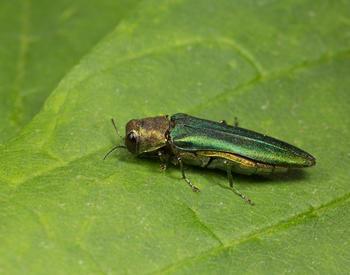
On June 30, 2022, emerald ash borer (EAB), an exotic beetle that infests ash trees, was discovered in Forest Grove, Oregon, marking the first confirmation of the invasive pest on the West Coast. In Oregon, the establishment of EAB could devastate whole habitat types that are dominated by Oregon ash such as ash swales and sensitive riparian zones, as well as reduce urban forest cover. This pest has proven deadly to all ash species in North America and Europe, including the native Oregon ash (Fraxinus latifolia).
State officials are working to determine how far and how fast this destructive insect is spreading in Oregon. The public can help by learning what to look for and reporting any sightings.
- Be alert: It is important to stop new outbreaks before they start. Early detection, coupled with rapid response, can stop the spread of new and emerging invasive species before they become established.
- Learn to recognize ash trees.
- Know how to identify the emerald ash borer:
Insect identification: Adult: 7.5 to 13.5 mm (0.3 to 0.5 inch) long, slender, and metallic olive to emerald green; active June through July Larva: 2.6 to 3.2 cm (1 to 1.3 inches) long, creamy white, with bell-shaped segments; found under the bark throughout the year; causes damage to tree by eating tissue below the bark. See photos and learn the hosts, signs and symptoms. - Report sightings of emerald ash borer: Report online at the Oregon Invasive Species Council hotline.
- Share information about emerald ash borer with others, including neighbors, fellow gardeners, hikers, mushroom hunters and campers.
- Do not move or transport ash wood: Even after a tree has died or has been cut down, there is still the possibility for the emerald ash borer to be present in the wood. Keeping the wood on the same site as the infected tree can help to slow the spread of the insect.
Additional Resources:
Emerald Ash Borer Lookalikes

